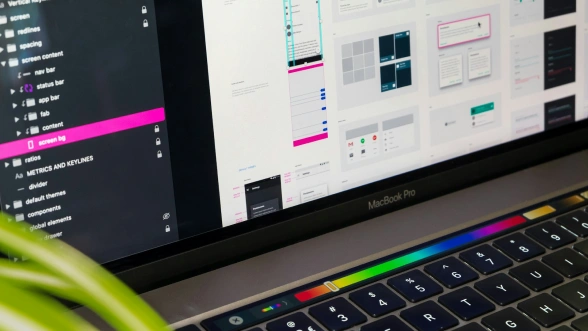Responsive Design

In today's digital age, where users interact with websites on a wide array of devices, from smartphones and tablets to desktops and large-screen displays, creating a website that looks and functions well across all these platforms is essential. This is where responsive design comes into play.
Responsive design is a web design approach that ensures a website's layout and content adapt smoothly to different screen sizes and devices. The goal is to provide an optimal viewing experience—easy reading and navigation with a minimum of resizing, panning, and scrolling—across a wide range of devices.

With the increasing diversity in device usage, responsive design is no longer optional; it's a necessity. Here’s why:
Over half of global web traffic now comes from mobile devices. Without a responsive design, your website may provide a poor experience on these devices, leading to high bounce rates and lost opportunities.
A responsive website adjusts to the user’s screen size, offering a seamless experience regardless of the device. This user-centered approach increases engagement and satisfaction.
Google has emphasized the importance of mobile-friendly websites by introducing mobile-first indexing. Responsive design helps improve your search engine rankings by ensuring that your website is optimized for mobile users.
Maintaining separate desktop and mobile sites can be costly and time-consuming. A responsive design eliminates the need for multiple versions of your site, streamlining development and maintenance.

To master the art of responsive design, there are several key principles that designers and developers should follow:
Instead of using fixed-width layouts, responsive design relies on fluid grids that scale based on the user's screen size. This means elements on the page resize proportionally, creating a consistent look across devices.
Images need to adapt to different screen sizes without compromising quality. Using CSS techniques like max-width: 100%, images can scale within the confines of their containers.
Media queries in CSS allow you to apply different styles based on the characteristics of the device, such as its width, height, and resolution. This ensures that your design adapts to the specific needs of each device.
The viewport meta tag is essential for controlling the layout on mobile browsers. It ensures that your website scales correctly on mobile devices by defining how the viewport should be displayed.
Text needs to be legible across all devices. Use relative units like em or rem instead of pixels for font sizes, and consider adjusting line height and spacing for different screen sizes.

To ensure your responsive design is effective, consider the following best practices:
Start designing for the smallest screen size first, then scale up for larger devices. This approach ensures a strong focus on essential content and functionality.
On smaller screens, space is limited. Prioritize the most important content and features to ensure users get the information they need without unnecessary clutter.
For mobile users, touch is the primary form of interaction. Ensure buttons and links are large enough to be easily tapped, and avoid elements that require hover actions.
As new devices and screen sizes are constantly being released, regular testing of your responsive design is crucial. Continuously test and refine your design to maintain a seamless experience.
Responsive design is more than just a trend—it's a fundamental aspect of modern web design. By mastering the art of responsive design, you can create websites that provide a superior user experience, perform well across all devices, and stand the test of time. Whether you’re a designer, developer, or business owner, embracing responsive design is key to staying competitive in the digital landscape.